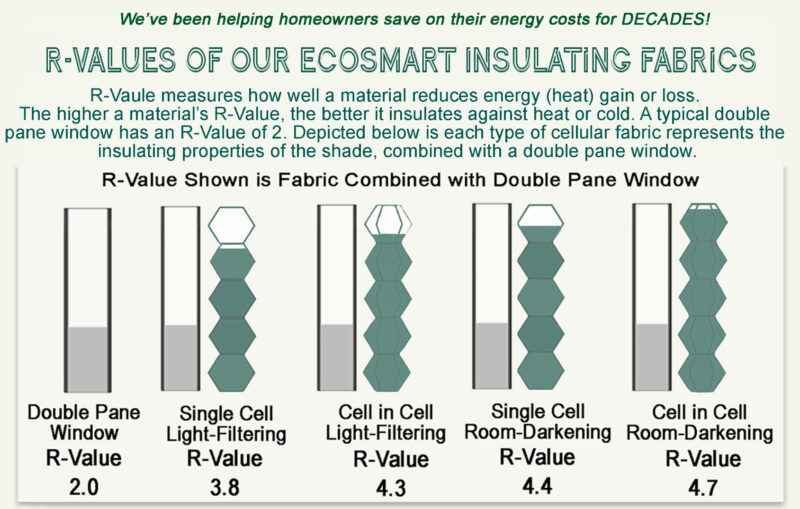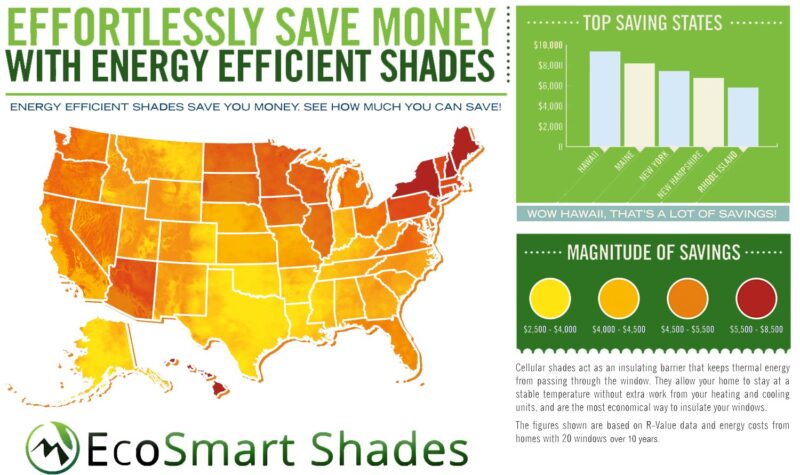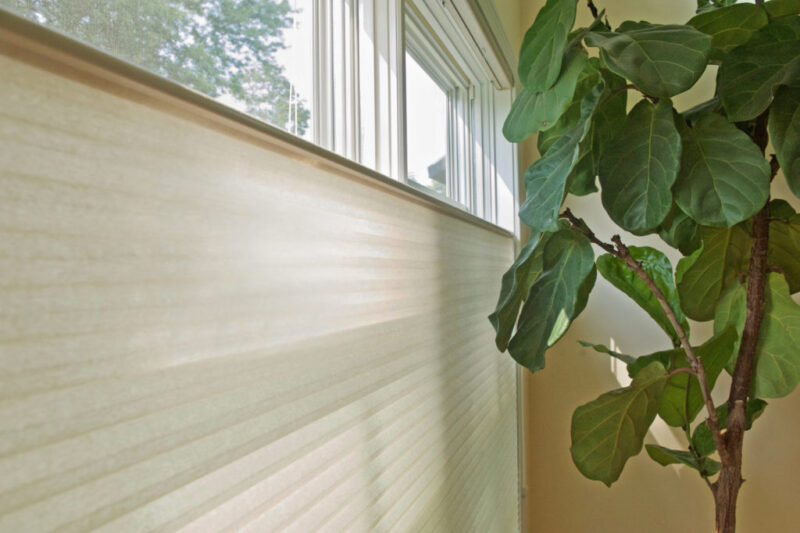“What is R-Value and why should I value it?”
Ok so let’s start with the basics – definition of R-Value:
“R-Value is the measure of a given material’s resistance to heat flow- how well it resists heat gain or loss. The higher the R-Value the better the insulation.”
Ok so we know a thing or two about insulation. C’mon, we live in Vermont. We only get about 3 months of Summer-like weather and the rest of the time we’re insulating our homes, cars and ourselves…and rest of the time, we’re basically thawing out.

Determining the exact R-Value of a window covering can be challenging, as there is no standardized test for the window covering industry.
EcoSmart Shades have had several independent entities like Harvard and Energy Balance test our EcoSmart Insulating Cellular Shades to help us determine an approximate R-Value for our shades. These tests all found the shades to be very effective insulators and the R-Values ranged from about 1.2-4 (not including the window) depending on the fabric, installation and operating conditions. The most efficient combination is our cell-in cell room-darkening fabric.
We made this handy-dandy graphic to show how much energy is saved with our EcoSmart Cellular Shades.

The R-value of our EcoSmart Cellular Shades depends on the type of fabric selected. See the chart below for details. The chart shows the R-value of each type of shade alone, and the combined R-values of our shades with various types of windows. Our cellular shades outperform nearly every type of window covering on the market!
Glass Panes:
Single-pane windows have low R-values (around 1). Double-pane windows offer significantly better insulation than single-pane. Triple-pane windows provide even higher R-values.
Glass Coatings:
Low-E coatings are thin layers that significantly improve a window’s ability to block heat transfer.
Design and construction: Ecosmart Cellular shade’s fabric honeycomb structure is specifically engineered to create air pockets that trap heat and slow the transfer.
One could say..

Heat flows in a room with a window via conduction, convection, radiation, and air leakage. In Winter, heat moves from the warm inside to the cold outside through these mechanisms, while in Summer, solar radiation and heat transfer work in the opposite direction.

Allllright one more chart, because everyone likes graphs!
You alll know what we’re gonna say, one of the easiest, SMARTEST ways to reduce heat transfer from your windows is by adding EcoSmart Cellular Shades on your windows! This way, you can diffuse the painful glare and enjoy natural daylight, but reduce the heat from the UV rays coming in.

Our Shade Gurus will get your windows insulated!
That’s Smart. EcoSmart.

